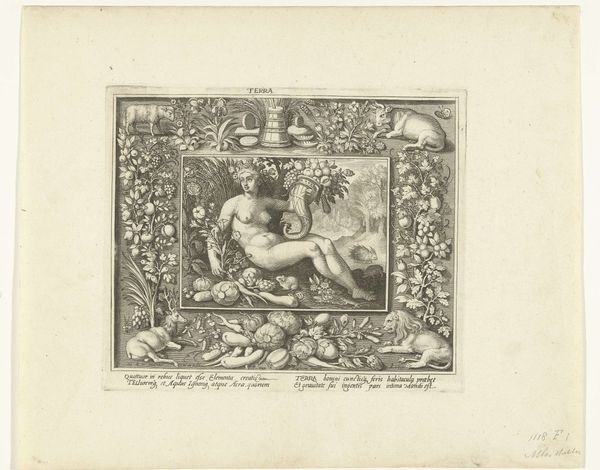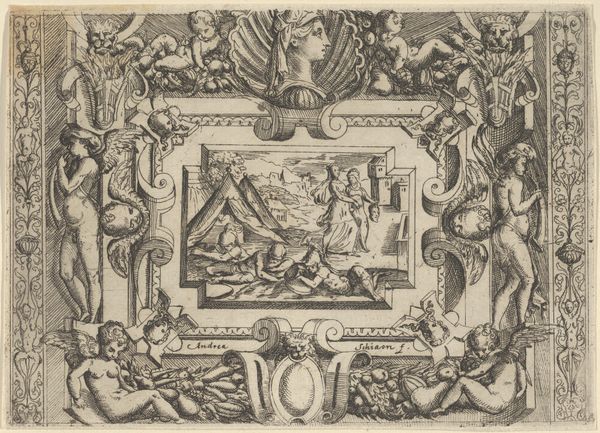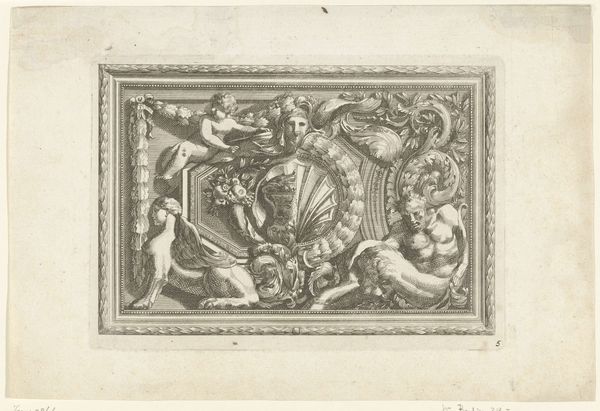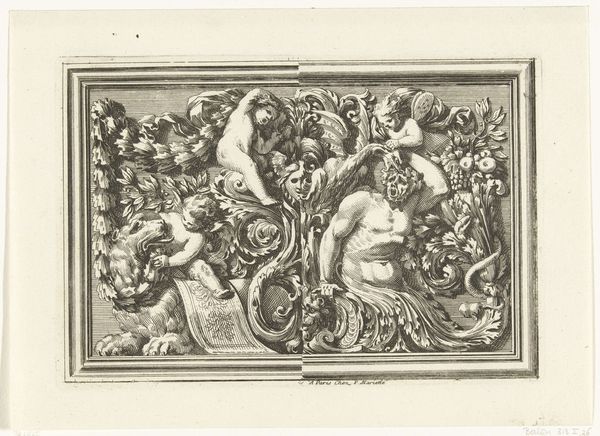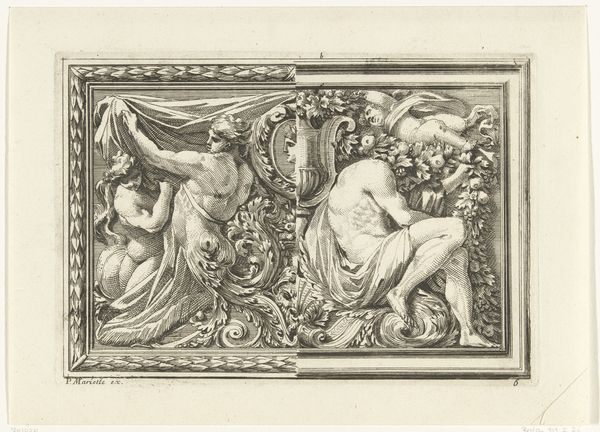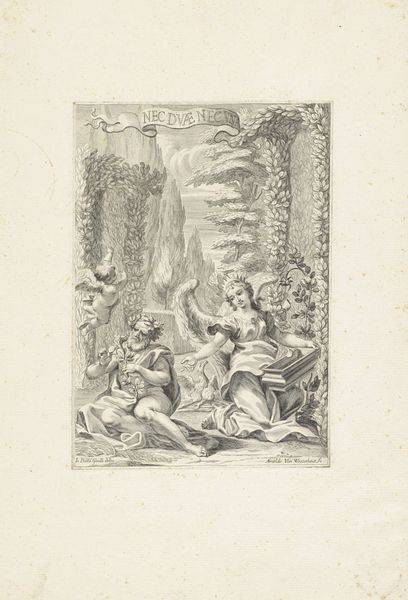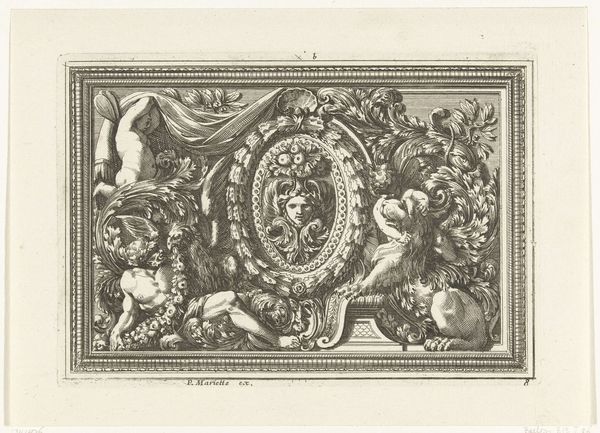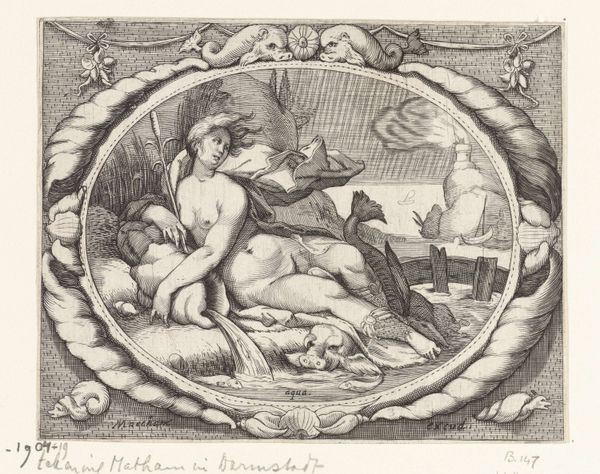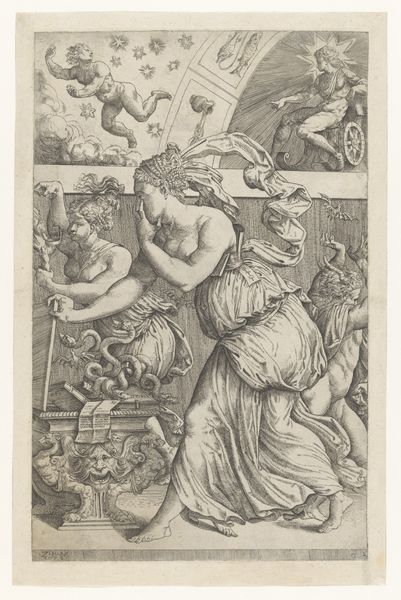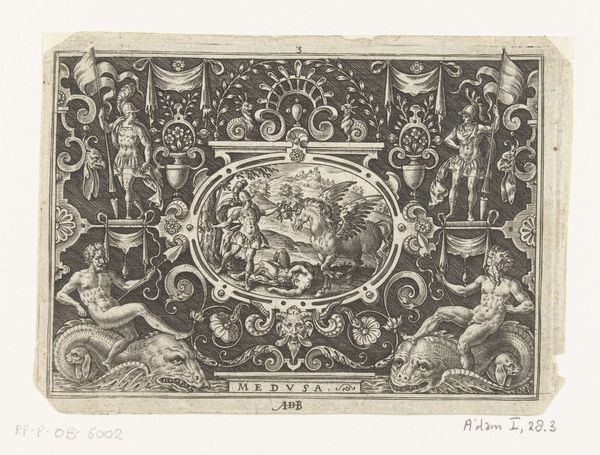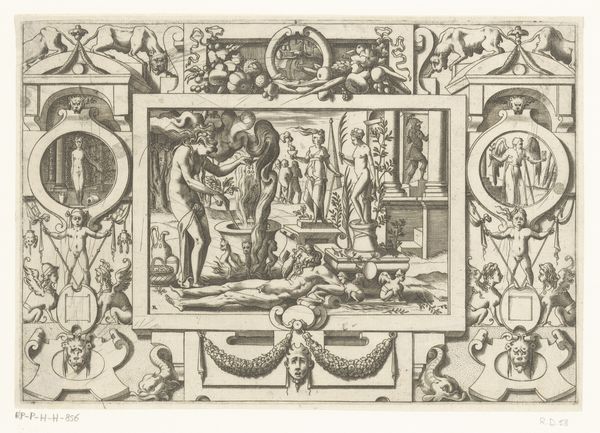
print, engraving
#
allegory
#
baroque
#
pen drawing
# print
#
landscape
#
figuration
#
nude
#
engraving
Dimensions: 7 11/16 x 9 1/16 in. (19.53 x 23.02 cm) (image, sheet)9 1/2 x 11 13/16 in. (24.13 x 30 cm) (mount)14 x 18 1/16 in. (35.56 x 45.88 cm) (mat)
Copyright: Public Domain
Nicolaes de Bruyn made this engraving, called "Terra," sometime in the late 16th or early 17th century. It depicts a nude female figure, surrounded by flora and fauna, representing the classical element of Earth. Prints like this circulated widely in Europe, playing a crucial role in disseminating knowledge and artistic ideas. De Bruyn worked in the Netherlands, a region experiencing significant economic and social change at the time. The Dutch Golden Age saw a burgeoning merchant class and a shift in artistic patronage away from the church and aristocracy. The image presents a vision of earthly abundance, with the landscape as a source of food, that chimes with the mercantile focus of the period. The visual codes in "Terra" are rooted in classical and mythological traditions, referencing antique sculpture and allegorical personifications. To understand this artwork fully, we need to consider its place within the wider history of printmaking and its relationship to the social and economic transformations of its time. Art historical research relies on understanding these connections, helping us to interpret the rich meanings embedded in images like this.
Comments
No comments
Be the first to comment and join the conversation on the ultimate creative platform.
